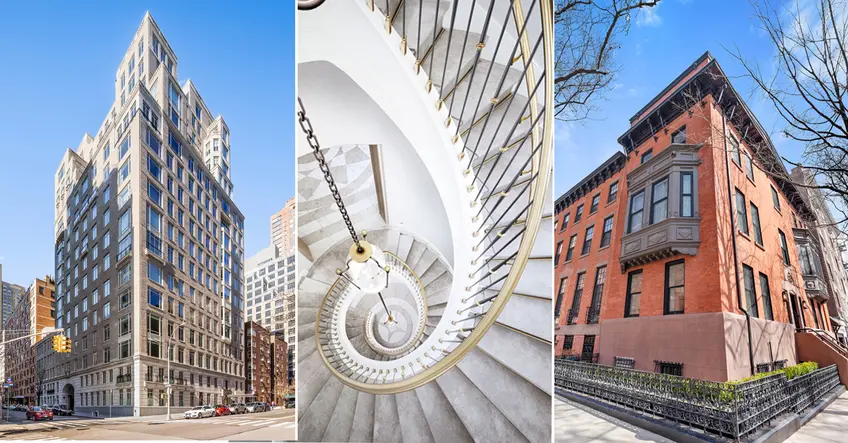 The luxury condo 20 East End Avenue and 149 Clinton Street in Brooklyn Heights
The luxury condo 20 East End Avenue and 149 Clinton Street in Brooklyn Heights
Owning a single-family home is the embodiment of the American Dream, and that was indeed the case in parts of New York City for over a century. As the decades passed, a new crop of high-rises sprang up to offer views, amenities, and conveniences that many New Yorkers were happy to embrace in exchange for a little less space and privacy.
At the moment, though, space and privacy are two commodities in rarer supply for New York apartment dwellers than toilet paper and hand sanitizer during the COVID-19 pandemic. Some people have been confined to small apartments in the wake of the stay-at-home order without even the luxury of retreating to a residents’ lounge or gym - some buildings have closed the shared amenities as part of the effort to flatten the curve - and may find themselves questioning the appeal of apartment life after all.
Certain luxury buyers may come away from this crisis with a new appreciation for traditional layouts with clearly defined rooms and doors, while others could be prepared to go one step further and seek out a whole small building to themselves. As everyone waits to see how the pandemic and its effects on the real estate market play out, we take a look at the pros and cons of each type.
At the moment, though, space and privacy are two commodities in rarer supply for New York apartment dwellers than toilet paper and hand sanitizer during the COVID-19 pandemic. Some people have been confined to small apartments in the wake of the stay-at-home order without even the luxury of retreating to a residents’ lounge or gym - some buildings have closed the shared amenities as part of the effort to flatten the curve - and may find themselves questioning the appeal of apartment life after all.
Certain luxury buyers may come away from this crisis with a new appreciation for traditional layouts with clearly defined rooms and doors, while others could be prepared to go one step further and seek out a whole small building to themselves. As everyone waits to see how the pandemic and its effects on the real estate market play out, we take a look at the pros and cons of each type.
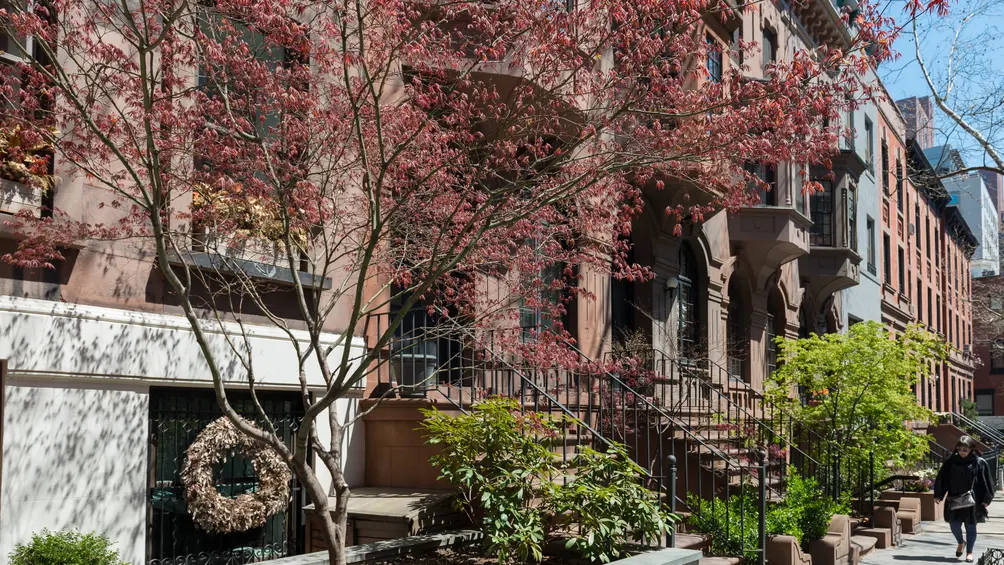 Townhouses in Yorkville on the Upper East Side
Townhouses in Yorkville on the Upper East Side
The popularity of brownstones in New York began in the late 1800’s when wealthy families wanted to live in opulent homes on the quiet side streets and not apartments on the main avenues. Wealthy New Yorkers wanted the privacy and convenience of a big house in the city, and these homes had the highest cache for over a century.
Indeed, a certain class of buyers still appreciates the appeal of having a house all to themselves. As architecturally adventurous as some new super-talls can be, some would say these cannot compete with the beauty and charm of historic townhouses. Others appreciate the privacy a single-family home has to offer - rather than crowd onto a condo’s shared roof deck on a nice day, these homeowners get their gardens and/or rooftops all to themselves. And while board approval is required for renovations in some co-ops, townhouse owners have the freedom to control their own construction.
"The townhouse is the only way to live self-sufficiently in the city" - S. Christopher Halstead, Executive Vice President, Halstead
In historic districts, though, that freedom goes only so far - some changes may be required to go beyond a co-op board to the city’s Landmarks Preservation Commission. And sometimes, the autonomy of a townhouse can turn out to be a disadvantage as owners realize they are responsible for everything. Zoe Kellerhals-Madusi of LG Fairmont remarks, “We get used to living in apartment buildings and therefore forget the little luxuries that go with them: the common areas are cleaned, the trash is disposed of, and the building maintenance is taken care of by the management company, to name a few items.”
Would you like to tour any of these properties?
Just complete the info below.
Or call us at (212) 755-5544
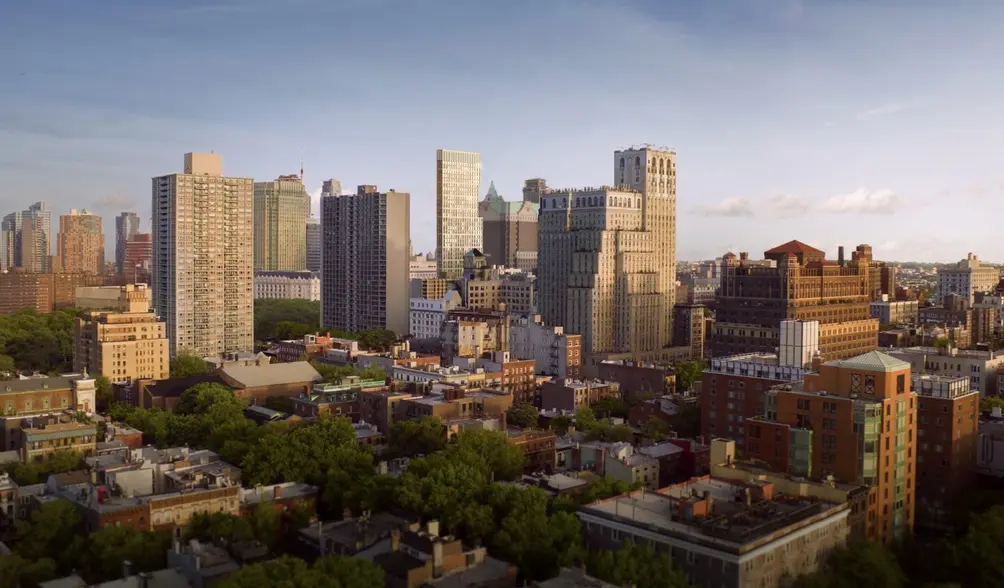 Downtown Brooklyn/Brooklyn Heights high-rises with One Clinton in center (Rendering credit: Marvel Architects)
Downtown Brooklyn/Brooklyn Heights high-rises with One Clinton in center (Rendering credit: Marvel Architects)
The Jazz Age ushered many changes into New York, and home types were among them. Prominent architect Rosario Candela leaned on tantalizing marketing techniques to convince wealthy New Yorkers to give up their mansions and move into his new multi-story buildings on the avenues. Some time later, modernist architect Le Corbusier waxed on about how high-rises were the ultimate equalizer for providing access to light, air, and nature, even calling his buildings “machines for living.”
Although New York City’s high-rises are not necessarily democratizing natural resources as their prices soar to unbelievable heights, an increasing number of developers and designers are embracing LEED certification and Passive House standards in the wake of both increased environmental awareness and the city’s planned letter grades for buildings’ energy efficiency. Upon completion, the finished products provide unparalleled, often 360-degree views and abundant natural light as they reach higher into the sky.
Just like townhouses, apartments in high-rise buildings tend to attract certain types of buyers. Some owners are in search of a pied a terre, or are frequent travelers who might not have time for the demands of a single-family home. Others are empty nesters moving to New York City after years of raising a family in a large suburban home who might not need as much space now. Still others see high-rises as emblematic of New York life.
These disparate classes of buyers seem to be drawn to New York high-rises for one common reason: the amenities, which have grown ever more luxurious/over the top as time goes on. Business travelers can enjoy greater peace of mind knowing that a full staff is on hand to collect their mail and ensure that the building is running smoothly. Growing families appreciate having playrooms and outdoor space just an elevator ride away. Still others enjoy the cache of having a fitness center, pool, wine room, IMAX theater, or hamman under their roof.
“The amenity spaces here make you feel special. They are grand but warm and enveloping and make people feel and act nicer.” - Lisa Baquero
As an example, developer Edward Baquero designed 20 East End Avenue, a 17-story Yorkville condominium, to feel like an elegant, private brownstone with its grand spiral staircase, wine cellar, library, billiard room and private bar. His wife Lisa explains, “You can easily entertain 40 to 50 people and never have them step foot in your home.” To that end, she has used the building's library to host book launches and charity events.
However, it is important to note that these amenities do not belong to Ms. Baquero alone; she had to make arrangements with the building management to have the library for her event, otherwise any resident could have walked in. Indeed, on nice days, some condos' rooftops can seem more crowded than Central Park.
However, it is important to note that these amenities do not belong to Ms. Baquero alone; she had to make arrangements with the building management to have the library for her event, otherwise any resident could have walked in. Indeed, on nice days, some condos' rooftops can seem more crowded than Central Park.
Would you like to tour any of these properties?
Just complete the info below.
Or call us at (212) 755-5544
Would you like to tour any of these properties?

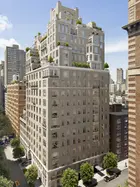
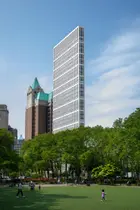
 6sqft delivers the latest on real estate, architecture, and design, straight from New York City.
6sqft delivers the latest on real estate, architecture, and design, straight from New York City.
